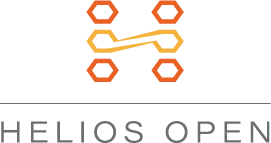Lehigh University
The Intersection of Translational Research and Open Scholarship in Research Evaluation
Lehigh University is taking a broad and intersectional approach to incorporating open scholarship and traditionally undervalued scholarly outputs in its incentive systems for faculty. In 2024, Lehigh was one of 18 U.S. universities to receive an Accelerating Research Translation (ART) grant from the National Science Foundation (NSF). The $6 million ART grant was designed to make accessible the fundamental work that happens within universities.
In the proposal, NSF requires every institution to make a commitment to revising tenure and promotion procedures and policies to value translational work on par with fundamental research. Co-leading this work, associate vice provost for research, Dominic Packer, and deputy provost for faculty affairs, Larry Snyder, understand the intersection of open scholarship, public-facing work, and translational research. Traditional approaches to supporting translational research practices include licensing technology to industry, spinning off startups, creating new technology, and ensuring interventions are implemented in schools, among other translational activities. Packer and Snyder are working to ensure that as Lehigh University explores adapting and adopting new incentives for translational research in its policies, the university takes into account public-facing work – an umbrella term that includes open science, open scholarship, and translational work. They are also intentional about using the word “work” as opposed to “scholarship” so it includes teaching and service, not just research.
Lehigh’s approach to revising tenure and promotion
The provost’s support was key and led to a push for broader changes, Packer explained. Packer, a psychologist, described his field’s investment in open scholarship as it supports better rigor and reproducibility. He understood the opportunity to incentivize open dissemination of scholarship as it supports transparency, rigor, reproducibility, and public engagement in the work. These values correlate well with the institution’s goal of adopting incentives for translational research.
The grant team’s first step was to conduct a survey of the faculty to determine how much faculty felt their contributions to open and translational work were valued, how much they believed their colleagues valued this work, and how much they felt the university valued this type of work in its policies and procedures. The results revealed a gap. Regardless of discipline or rank, faculty members, on average, wanted to spend about 25% more of their time doing public-facing, user-oriented translational research. Respondents also indicated, while they personally understood the importance of public-facing work, they did not believe their departmental colleagues felt the same. Lehigh shared its findings on campus to expose this normative gap. Packer shared that it underscored the following message:
“If researchers don’t feel like leadership or peers value something like open, public-facing work, and they are up for promotion, they are not going to invest time in it.”
Working with campus partners to change and broaden the definition of “excellence”
Like other universities, Lehigh University has traditionally asked for faculty to demonstrate “excellence in research, teaching and service,” leaving it up to each college and department to develop their own detailed guidelines. This means that there is flexibility if departments want to be explicit about valuing public-facing work and its impact. However, it is not clear the extent to which departments are allowed to set their own guidelines without a university level policy. A subcommittee of the university Faculty Senate is currently exploring the issue and considering changes to the university rules and procedures document and its faculty handbook.
Overcoming challenges
Among the challenges Lehigh is experiencing in incorporating explicit incentives for public-facing work, is considering how best to evaluate the impact of this type of work. Relatedly, the team needs to consider and streamline various evaluation assessment efforts across campus to ensure that departments are not working at cross purposes or recreating the wheel. At Lehigh, there is broad support for the idea, but concerns remain about, for example, the use of metrics. If including other kinds of work in their CVs, chairs and deans want to know how to count or measure it. Snyder said there is a sense with some faculty that they are being asked to do something new, when in reality, the goal is to more explicitly value things that people are already doing.
The implementation team is considering whether an umbrella approach to reforming tenure and promotion is potentially risky because tackling several issues means any individual one could derail the process. However, administrators and researchers across disciplines are often making changes to better recognize values they, their institution, society, and their disciplines might hold.
Finally, a perceived tension between openness and commercialization still exists. When ideas can be commercialized, there are disincentives, in some cases, to sharing and making things open. Lehigh is exploring approaches to navigating that tension.
Moving forward, Lehigh University will continue working with deans, chairs and the Faculty Senate to address vagueness in existing guidelines and address omissions that encourage faculty to underplay their public-facing work.
